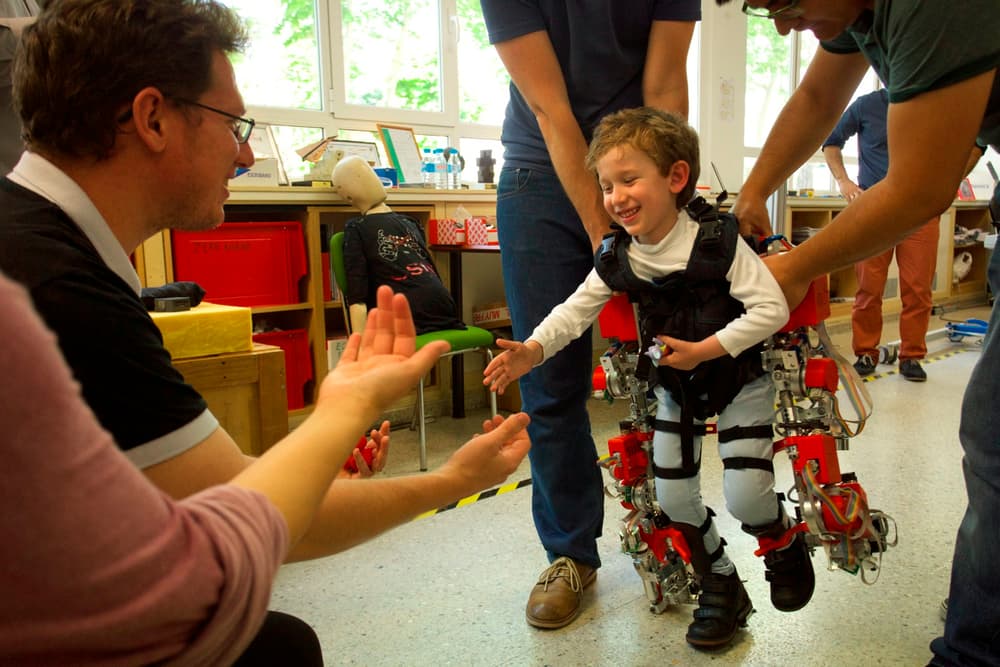Spanish engineers have created an Exeskeleton for children suffering from muscular atrophy

Engineers from the Spanish company Marsi Bionics, together with the National Research Council of Spain, created an autonomous exoskeleton to treat and help children suffering from spinal muscular atrophy. In Spain, the disease occurs in about one in ten thousand babies. Physicians from the Hospital San Juan de Dios also participated in the development and testing.
The exoskeleton created by engineers from aluminum and titanium weighs only 12 kilograms and has a resource of up to five hours of battery life on a single battery charge. Electric motors are installed on the “joints” of the exoskeleton, which take on part of the load and provide the child with the effort necessary for movement. In total, each leg has five electric motors. In addition, the size of the exoskeleton can be adjusted for a particular child, which gives the product versatility.

Photo created exoskeleton
')
Spinal muscular atrophy is a hereditary disease that manifests itself in different patients at different ages. When it occurs, the motor neurons and the horns of the spinal cord are affected For children, a violation of motor functions, such as crawling (and later walking), holding the head, swallowing, is characteristic. All this impedes the movement of the child and, as a result, its full physical development, which affects the health and longevity, and in the absence of treatment and the development of the disease the patient faces complete paralysis. It is worth noting that spinal muscular atrophy does not cause delays in mental development .
According to Elena Garcia, an engineer at the Center for Automation and Robotics at the University of Spain, “the main problem of exoskeletons in this context is that with the development of such diseases as spinal atrophy, over time, the patient affects not only the limbs, but also the muscles of the body”. That is why the massive effective use of exoskeletons for muscular atrophy was difficult - in each case a different device model was required. The development of the Spanish engineers, in terms of efforts to support the body, is able to adapt to the needs of each individual child.
Helen Garcia also adds that a lightened model can be created for those patients whose muscle damage is not too extensive. “We could make the design easier for such people and reduce the number of electric drives,” she says.
The exoskeleton has a limited construction size and is adapted for use by children aged from three to fourteen years. It is planned to be used not only for household adaptation of children, but also for the treatment of patients in the hospital.
With spinal muscular atrophy, the percentage of infant mortality is high, but in some patients the symptoms appear much later (from 18 months and later), already at a more mature age. Most often, such patients lose the opportunity to walk in their youth, their life expectancy is not reduced, but it is impossible to call it comfortable. For them, the development of Spanish engineers and physicians is a chance to regain the lost opportunity to walk and lead a full and independent life again.
Source: https://habr.com/ru/post/369359/
All Articles